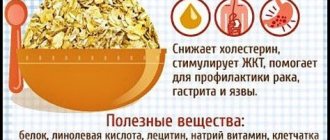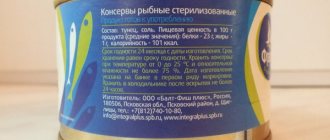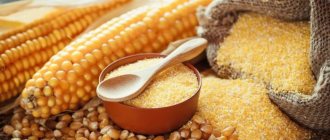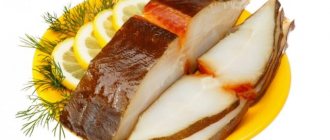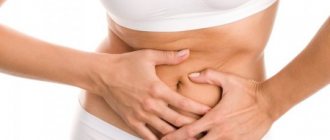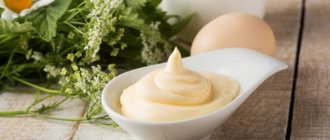Chemical composition of beets with garlic and mayonnaise
The salad contains the following vitamins:
- axerophthol (retinol equivalent);
- alpha tocopherol;
- ascorbic acid;
- beta-carotene;
- a nicotinic acid;
- pantothenic acid;
- pyridoxine;
- retinol;
- riboflavin;
- thiamine;
- phylloquinone;
- folates;
- choline
The salad also contains microelements, macroelements, sterols, fatty acids and carbohydrates:
- iron;
- iodine;
- potassium;
- calcium;
- cobalt;
- starch and dextrins;
- magnesium;
- manganese;
- copper;
- mono- and disaccharides;
- monounsaturated fatty acids;
- saturated fatty acids;
- sodium;
- polyunsaturated fatty acids;
- selenium;
- sitosterol;
- phosphorus;
- chlorine;
- cholesterol;
- zinc.
The benefits and harms of beet salad
Beets, both processed and raw, have been used as food for a long time and are popular in many cuisines around the world. Famous chefs and nutritionists especially emphasize the combination of this root vegetable with garlic in dishes. In addition, these products are rich in beneficial substances, which are mostly preserved after heat treatment.
Beetroot salad with garlic and mayonnaise is healthy due to the following factors:
- beneficial amino acids are absorbed from the root crop;
- mechanical action on garlic leads to the release of the natural antibiotic allicin;
- natural mayonnaise supplies the body with nutritious fats;
- garlic improves immunity;
- healthy cholesterol ensures the functioning of heart valves;
- lemon juice and vinegar in mayonnaise stimulates the synthesis of digestive enzymes.
In some cases, you will have to stop eating beet salad, especially if you use fresh root vegetables.
This is due to a number of reasons:
- presence of pancreatitis;
- diseases of the biliary tract;
- tendency to be allergic to eating red vegetables and fruits;
- raw beets can cause stomach upset;
- tendency to hypertension;
- The root crop is capable of absorbing harmful substances from the soil.
To minimize undesirable effects, the root vegetable is used boiled and baked.
Benefits and harms for those losing weight
In the summer season, it is better to use fruits and dishes with vegetables for weight loss. Salads with beets for maximum weight loss are ideal in autumn and winter. By consuming beets, you can arrange fasting days or include beet salads in your diet menu.
This vegetable is not healthy for everyone, so it is better to consult a doctor before using it in your diet.
Contraindications may be as follows:
- diabetes;
- stomach upsets;
- intestinal diseases;
- urolithiasis disease.
If you do not overuse beetroot salads with various ingredients, then this vegetable will be beneficial for the body due to the fact that it contains natural fiber. It serves as a source of lipids in the blood, which normalize liver function. It is important to follow the norm when consuming beets regularly.
Percent Daily Value
The amount of vitamins, micro- and macroelements is indicated in the table:
| Nutrient | Quantity | Daily value for an adult | Part of the daily value in 100 g |
| Vitamins | |||
| axerophthol (retinol equivalent) | 5.3 mcg | 900 mcg | 0,6 % |
| alpha tocopherol | 5.791 mg | 15 mg | 38,6 % |
| ascorbic acid | 7.26 mg | 90 mg | 8,1% |
| a nicotinic acid | 0.6041 mg | 20 mg | 3 % |
| pantothenic | 0.027 mg | 5 mg | 0,5 % |
| pyridoxine | 0.029 mg | 2 mg | 1,5 % |
| provitamin A | 0.008 mg | 5 mg | 0,2 % |
| retinol | 0.004 mg | 0.7-0.9 mg | 0,5 % |
| riboflavin | 0.051 mg | 1.8 mg | 2,8 % |
| thiamine | 0.021 mg | 1.5 mg | 1,4 % |
| phylloquinone | 0.1 mcg | 120 mcg | 0,1 % |
| folates | 0.136 mcg | 400 mcg | 0,034 % |
| choline | 3.78 mg | 500 mg | 0,8 % |
| Macronutrients | |||
| potassium | 280.52 mg | 2500 mg | 11,2 % |
| sodium | 134.78 mg | 1300 mg | 10,4 % |
| phosphorus | 53.8 mg | 800 mg | 6,7 % |
| calcium | 48.83 mg | 1000 mg | 4,9 % |
| magnesium | 23.71 mg | 400 mg | 5,9 % |
| chlorine | 1.36 mg | 2300 mg | 0,1 % |
| Microelements | |||
| copper | 5.88 mcg | 1000 mcg | 0,6 % |
| iron | 1.558 mg | 18 mg | 8,7 % |
| selenium | 0.643 mcg | 55 mcg | 1,2 % |
| iodine | 0.41 mcg | 150 mcg | 0,3 % |
| cobalt | 0.407 mcg | 10 mcg | 4,1 % |
| zinc | 0.0462 mg | 12 mg | 0,4 % |
| manganese | 0.0367 mg | 2 mg | 1,8 % |
| Other elements | |||
| polyunsaturated fatty acids | 7.463 g | from 11.2 to 20.6 g | 66,6 % |
| monounsaturated fatty acids | 3.102 g | minimum 16.8 g | 18,5 % |
| saturated fatty acids | 1.5 g | 15-20 g | 7,5-10 % |
Recipe: Beetroot salad with garlic. Calorie, chemical composition and nutritional value.
Nutritional value and chemical composition of “Beet salad with garlic.”
The table shows the nutritional content (calories, proteins, fats, carbohydrates, vitamins and minerals) per 100 grams of edible portion.
| Nutrient | Quantity | Norm** | % of the norm in 100 g | % of the norm in 100 kcal | 100% normal |
| Calorie content | 51.4 kcal | 1684 kcal | 3.1% | 6% | 3276 g |
| Squirrels | 1.6 g | 76 g | 2.1% | 4.1% | 4750 g |
| Fats | 2 g | 56 g | 3.6% | 7% | 2800 g |
| Carbohydrates | 6.8 g | 219 g | 3.1% | 6% | 3221 g |
| Organic acids | 0.1 g | ~ | |||
| Alimentary fiber | 2.6 g | 20 g | 13% | 25.3% | 769 g |
| Water | 83.4 g | 2273 g | 3.7% | 7.2% | 2725 g |
| Ash | 0.71 g | ~ | |||
| Vitamins | |||||
| Vitamin A, RE | 2.2 mcg | 900 mcg | 0.2% | 0.4% | 40909 g |
| Retinol | 0.001 mg | ~ | |||
| beta carotene | 0.009 mg | 5 mg | 0.2% | 0.4% | 55556 g |
| Vitamin B1, thiamine | 0.018 mg | 1.5 mg | 1.2% | 2.3% | 8333 g |
| Vitamin B2, riboflavin | 0.034 mg | 1.8 mg | 1.9% | 3.7% | 5294 g |
| Vitamin B4, choline | 6.42 mg | 500 mg | 1.3% | 2.5% | 7788 g |
| Vitamin B5, pantothenic | 0.101 mg | 5 mg | 2% | 3.9% | 4950 g |
| Vitamin B6, pyridoxine | 0.058 mg | 2 mg | 2.9% | 5.6% | 3448 g |
| Vitamin B9, folates | 5.81 mcg | 400 mcg | 1.5% | 2.9% | 6885 g |
| Vitamin C, ascorbic acid | 2.86 mg | 90 mg | 3.2% | 6.2% | 3147 g |
| Vitamin E, alpha tocopherol, TE | 0.967 mg | 15 mg | 6.4% | 12.5% | 1551 g |
| Vitamin H, biotin | 0.267 mcg | 50 mcg | 0.5% | 1% | 18727 g |
| Vitamin K, phylloquinone | 0.2 mcg | 120 mcg | 0.2% | 0.4% | 60000 g |
| Vitamin RR, NE | 0.3476 mg | 20 mg | 1.7% | 3.3% | 5754 g |
| Niacin | 0.165 mg | ~ | |||
| Macronutrients | |||||
| Potassium, K | 237.18 mg | 2500 mg | 9.5% | 18.5% | 1054 g |
| Calcium, Ca | 35.61 mg | 1000 mg | 3.6% | 7% | 2808 g |
| Silicon, Si | 45.619 mg | 30 mg | 152.1% | 295.9% | 66 g |
| Magnesium, Mg | 20.56 mg | 400 mg | 5.1% | 9.9% | 1946 |
| Sodium, Na | 47.75 mg | 1300 mg | 3.7% | 7.2% | 2723 g |
| Sera, S | 12.52 mg | 1000 mg | 1.3% | 2.5% | 7987 g |
| Phosphorus, P | 43.9 mg | 800 mg | 5.5% | 10.7% | 1822 |
| Chlorine, Cl | 33.1 mg | 2300 mg | 1.4% | 2.7% | 6949 g |
| Microelements | |||||
| Aluminium, Al | 53.5 mcg | ~ | |||
| Bor, B | 179 mcg | ~ | |||
| Vanadium, V | 40 mcg | ~ | |||
| Iron, Fe | 1.305 mg | 18 mg | 7.3% | 14.2% | 1379 g |
| Yod, I | 4.69 mcg | 150 mcg | 3.1% | 6% | 3198 g |
| Cobalt, Co | 2.19 mcg | 10 mcg | 21.9% | 42.6% | 457 g |
| Lithium, Li | 34.286 mcg | ~ | |||
| Manganese, Mn | 0.399 mg | 2 mg | 20% | 38.9% | 501 g |
| Copper, Cu | 132.1 mcg | 1000 mcg | 13.2% | 25.7% | 757 g |
| Molybdenum, Mo | 5.714 mcg | 70 mcg | 8.2% | 16% | 1225 g |
| Nickel, Ni | 8.286 mcg | ~ | |||
| Rubidium, Rb | 304.2 mcg | ~ | |||
| Selenium, Se | 0.601 mcg | 55 mcg | 1.1% | 2.1% | 9151 g |
| Strontium, Sr | 4.8 mcg | ~ | |||
| Fluorine, F | 14.38 mcg | 4000 mcg | 0.4% | 0.8% | 27816 g |
| Chromium, Cr | 11.62 mcg | 50 mcg | 23.2% | 45.1% | 430 g |
| Zinc, Zn | 0.4574 mg | 12 mg | 3.8% | 7.4% | 2624 g |
| Zirconium, Zr | 0.05 mcg | ~ | |||
| Digestible carbohydrates | |||||
| Starch and dextrins | 0.095 g | ~ | |||
| Mono- and disaccharides (sugars) | 7.5 g | max 100 g | |||
| Glucose (dextrose) | 0.41 g | ~ | |||
| Sucrose | 8.81 g | ~ | |||
| Fructose | 0.21 g | ~ | |||
| Essential amino acids | 0.418 g | ~ | |||
| Arginine* | 0.085 g | ~ | |||
| Valin | 0.053 g | ~ | |||
| Histidine* | 0.015 g | ~ | |||
| Isoleucine | 0.061 g | ~ | |||
| Leucine | 0.069 g | ~ | |||
| Lysine | 0.093 g | ~ | |||
| Methionine | 0.02 g | ~ | |||
| Methionine + Cysteine | 0.04 g | ~ | |||
| Threonine | 0.054 g | ~ | |||
| Tryptophan | 0.014 g | ~ | |||
| Phenylalanine | 0.047 g | ~ | |||
| Phenylalanine+Tyrosine | 0.102 g | ~ | |||
| Nonessential amino acids | 0.96 g | ~ | |||
| Alanin | 0.044 g | ~ | |||
| Aspartic acid | 0.319 g | ~ | |||
| Glycine | 0.04 g | ~ | |||
| Glutamic acid | 0.282 g | ~ | |||
| Proline | 0.048 g | ~ | |||
| Serin | 0.063 g | ~ | |||
| Tyrosine | 0.05 g | ~ | |||
| Cysteine | 0.016 g | ~ | |||
| Sterols (sterols) | |||||
| Cholesterol | 2.86 mg | max 300 mg | |||
| beta sitosterol | 3.714 mg | ~ | |||
| Saturated fatty acids | |||||
| Saturated fatty acids | 0.3 g | max 18.7 g | |||
| 16:0 Palmitinaya | 0.128 g | ~ | |||
| 18:0 Stearic | 0.08 g | ~ | |||
| 20:0 Arakhinovaya | 0.006 g | ~ | |||
| 22:0 Begenovaya | 0.013 g | ~ | |||
| Monounsaturated fatty acids | 0.466 g | min 16.8 g | 2.8% | 5.4% | |
| 16:1 Palmitoleic | 0.002 g | ~ | |||
| 18:1 Oleic (omega-9) | 0.462 g | ~ | |||
| Polyunsaturated fatty acids | 1.246 g | from 11.2 to 20.6 g | 11.1% | 21.6% | |
| 18:2 Linolevaya | 1.121 g | ~ | |||
| Omega-6 fatty acids | 1.2 g | from 4.7 to 16.8 g | 25.5% | 49.6% |
The energy value of Beetroot Salad with Garlic is 51.4 kcal.
Primary Source: Created in the application by the user. Read more.
** This table shows the average levels of vitamins and minerals for an adult. If you want to know the norms taking into account your gender, age and other factors, then use the “My Healthy Diet” application.
Energy analysis
The table provides a comparative analysis of the content of components and their portion of the daily requirement for an adult:
| Nutrient | Quantity | Daily norm | Part of the daily value in 100 g |
| Calorie content 100 g with mayonnaise 50% fat | 77 kcal | 1684 kcal | 4,6 % |
| Water | 82.7 g | 2273 g | 3,6 % |
| Squirrels | 1.8 g | 76 g | 2,4 % |
| Fats | 3.8 g | 56 g | 6,8% |
| Carbohydrates | 8 g | 219 g | 3,7% |
| Alimentary fiber | 1.9 g | 20 g | 9,5% |
What determines the calorie content of beets with garlic and mayonnaise?
Beets with garlic and mayonnaise, the calorie content of which depends on the salad ingredients, can be prepared using various sauces and dressings. Fatty store-bought mayonnaise for such dishes can be replaced with a lean product with a low fat content, and even better if homemade vegetarian mayonnaise is used.
Low-fat salad dressings used for weight loss can be prepared using water, vegetable oil (preferably olive oil) and liquid from canned peas or beans. At the same time, to give sauces a special taste, they may include components such as apples, avocados, nuts, chickpeas, peas, beans, and sweet mustard.
This sauce reduces the calorie content of the salad by about 6 times.
Beetroot with garlic and mayonnaise
Since today we are talking about the calorie content of beets with garlic and mayonnaise, then for cooking you will need a boiled vegetable. This salad is a favorite appetizer for many, which always decorates the holiday table.
The recipe is very simple. To prepare, you will need boiled beets (250 grams), mayonnaise (45 grams), salt and pepper, and also a little chopped garlic to spice up the dish. Grind the beets on a fine grater, add spices and garlic. Then add a couple of spoons of mayonnaise. The dish is ready. Garnish it with a couple of bright green parsley leaves and you are ready to serve.
Energy value per 100 g
The calorie content of beets and beet salad depends on the method of preparing the root vegetable, as well as the fat content of the mayonnaise.
Comparative data is presented in the table:
| Product | Kcal content | Volume kJ |
| raw beets | 40 | 167,5 |
| boiled beets | 49 | 205,15 |
| stewed beets | 106,3 | 445 |
| baked beets | 41 | 171,7 |
| beets with mayonnaise 20-30% fat | 205-295 kcal | 858-1 235 |
| beets with mayonnaise 40-55% fat | 425-569 kcal | 1 780-2 382 |
| beets with mayonnaise 65% fat | 499-850 kcal | 2 089-3 558 |
| beets with soy mayonnaise | 400 kcal | 1 675 |
| beets with olive mayonnaise | 675 kcal | 2 826 |
| beets with Provencal mayonnaise 67% fat | 730-800 kcal | 3 056-3 350 |
| beets with homemade mayonnaise | 680 kcal | 2 847 |
